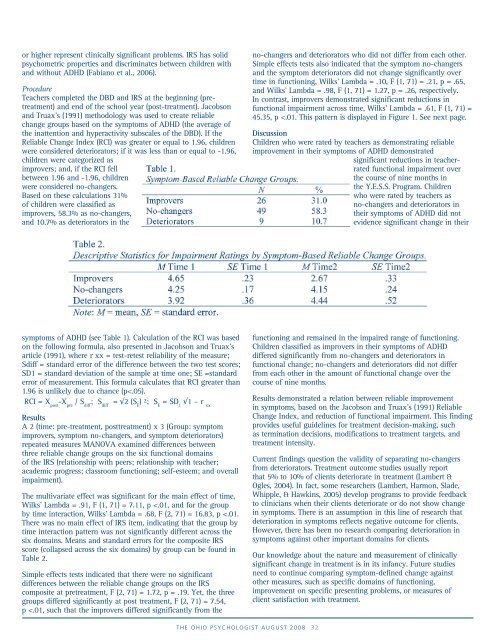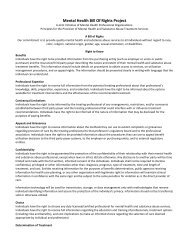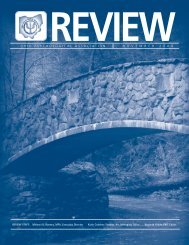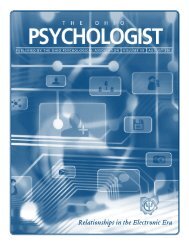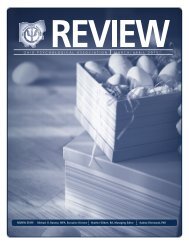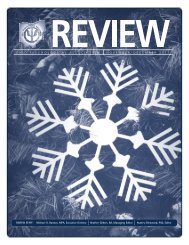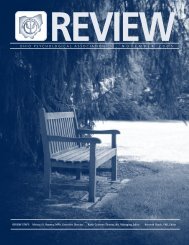2008 Ohio Psychologist - Ohio Psychological Association
2008 Ohio Psychologist - Ohio Psychological Association
2008 Ohio Psychologist - Ohio Psychological Association
Create successful ePaper yourself
Turn your PDF publications into a flip-book with our unique Google optimized e-Paper software.
or higher represent clinically significant problems. IRS has solid<br />
psychometric properties and discriminates between children with<br />
and without ADHD (Fabiano et al., 2006).<br />
Procedure<br />
Teachers completed the DBD and IRS at the beginning (pretreatment)<br />
and end of the school year (post-treatment). Jacobson<br />
and Truax’s (1991) methodology was used to create reliable<br />
change groups based on the symptoms of ADHD (the average of<br />
the inattention and hyperactivity subscales of the DBD). If the<br />
Reliable Change Index (RCI) was greater or equal to 1.96, children<br />
were considered deteriorators; if it was less than or equal to -1.96,<br />
children were categorized as<br />
improvers; and, if the RCI fell<br />
between 1.96 and -1.96, children<br />
were considered no-changers.<br />
Based on these calculations 31%<br />
of children were classified as<br />
improvers, 58.3% as no-changers,<br />
and 10.7% as deteriorators in the<br />
no-changers and deteriorators who did not differ from each other.<br />
Simple effects tests also indicated that the symptom no-changers<br />
and the symptom deteriorators did not change significantly over<br />
time in functioning, Wilks’ Lambda = .10, F (1, 71) = .21, p = .65,<br />
and Wilks’ Lambda = .98, F (1, 71) = 1.27, p = .26, respectively.<br />
In contrast, improvers demonstrated significant reductions in<br />
functional impairment across time, Wilks’ Lambda = .61, F (1, 71) =<br />
45.35, p


